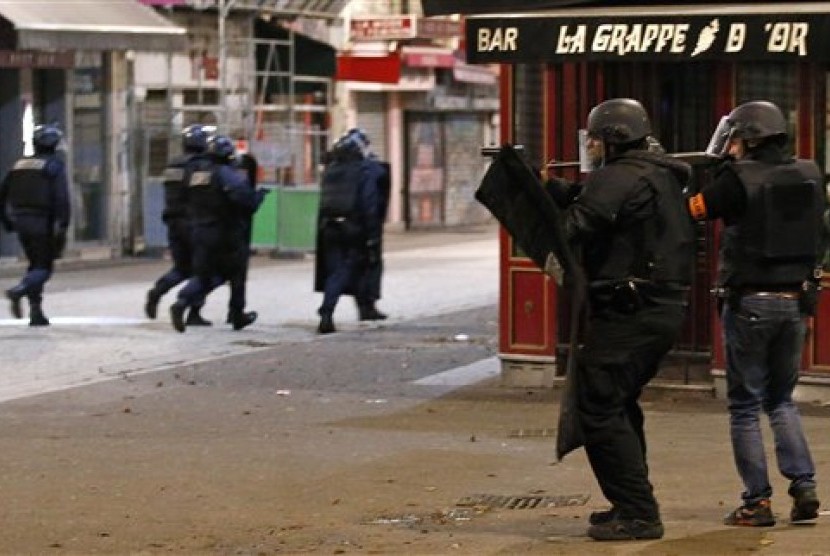By: S Riyanta *)
REPUBLIKA.CO.ID, ISIS has lost half of its territory in Iraq and 20% in Syria. The main supply route from Turkey has also broken. From territorial perspective, ISIS is cornered and weakened. Nevertheless, vigilance against the terrorist group's actions should not be reduced. ISIS and its affiliated terrorist groups are very adaptive. The group is able to adjust to the situation.
Shrinking territory will directly limit the existence of ISIS. This will certainly change ISIS strategy to strengthen its influence. ISIS very creatively utilizes all means to demonstrate its existence and increase the attraction for sympathizers and supporters. The suppression of ISIS territory in Iraq and Syria by the combined forces will motivate ISIS to retaliate with more effective attacks. ISIS utilizes Internet technology to mobilize sympathizers in many countries to carry out sporadic attacks to keep the existence and to press its opponents.
Change of Action
ISIS’ attacks in Europe, including a brutal attack in Paris in November 2015 showed that ISIS was not messing around in their actions. The attack was carefully planned by utilizing a robust network. ISIS uses online applications like Telegram and Whatsapp, which are encrypted, in communicating with their networks.
Not only in Europe, in Southeast Asia, ISIS has managed to exert influence. Propaganda spread through social media can be accessed by many people. The dissemination of propaganda is intended to demonstrate its power and influence, as well as to be an attraction to get more sympathizers. In Indonesia alone, most radical groups are "suddenly" affiliating themselves to ISIS. Not only groups but also individuals who had not previously attached to any network such as Medan bomber group.
Ivan Armadi Hasugian, an performed acts of terror in Medan, North Sumatra, just by following technical guidance from the internet. In fact, National Police Chief, Gen. Tito Karnavian, insists that the bomber of the Catholic Church of St. Joseph Stasi, Medan, that Iwan is in direct contact with Bahrun Naim, ISIS leaders believed to be in Syria. This shows that ISIS is capable of adaptation and innovation so that it successfully performed terror effectively. Single terrorist is able to be driven and controlled remotely. This is a proof that the terrorists groups ability to adapt.
Incessant attacks against ISIS in Syria have broken ISIS’ forces and shrunk its territory. In addition, support from sympathizers is also on the wane. ISIS is then adapting, it calls its sympathizers to perform action in each territory. This has led to a serie of terrorist acts in several areas in Europe. ISIS’ adaptation was successful in demonstrating the existence of ISIS. It also has used Social media and the internet well.
The terrorist group in Indonesia is likely to use adaptability as shown by ISIS. East Indonesia Mujahidin group that was increasingly pressured and nearly exhausted in Poso could use adaptability and survival skills of ISIS to change the form of action to demonstrate its existence. MIT’s combatants will continue to be pressed by the Tinombala Task Force. MIT will not be able to fight the Task Force. Nevertheless, MIT can not be considered to be weak and exhausted. MIT’s network of sympathizers and non-combatants might spread in various areas, they likely also have some links to terrorist groups elsewhere. Networks of these groups might possibly perform some attacks in their respective regions to show their existence.
Handling
Terrorist groups that continue to adapt must be addressed in innovative ways. Changes in movements / actions of terror groups must be dealt with changes in the pattern of handling. In the context of terrorist groups in Indonesia, the use of weapons must be balanced with the use of social media and the internet.
Currently, social media and internet contents related to radical groups are more widely available than the contents of pluralism and peace. Government, especially the Ministry of Communications and Informatics seems to be less intense in disseminating propaganda to fight against radical groups. Sites that present a more radical narrative content are more appealing especially to answer the needs of self-actualization and the thirst for novelty for most of the younger generation.
To prevent the circulation of radical narratives that might trigger act of terrorism, the government should carry out the integration of stakeholders such as the Ministry of Communications and Informatics, Ministry of Youth and Sports, Ministry of Religious Affairs, Ministry of Education, MUI, Police, BNPT, BIN and other agencies to make concrete measures against propaganda of terrorist groups. Countries must innovate to address the adaptation of terrorist groups.
The government should not hesitate to shut down the site containing the radical narratives. In addition to closing the site, the government needs to promote intensively sites with tolerance and peace content. A culture of tolerance and peace that likely begin to decrease should be promoted again. If young people are tolerant and peace loving, the doctrine of the radical narrative will not be heard.
The terrorist groups keep adapting themselves and changing the pattern of their actions to preserve their existence. The pattern that previously centered and stationer is now spreading and moving in smaller group even individually. Social media and internet have become effective tools for the radical groups to adapt and change the pattern of actions.
All these must be faced with innovative measures. The way we handle this issue must be adjusted with their change of pattern. The government cannot lose against the terrorist groups. When they are able to adapt, the government must also create innovation to stop them developing.
*) S Riyanta, an intelligence and terrorism analyst, alumni of Strategic Intelligence Studies Post Graduate Program, University of Indonesia


